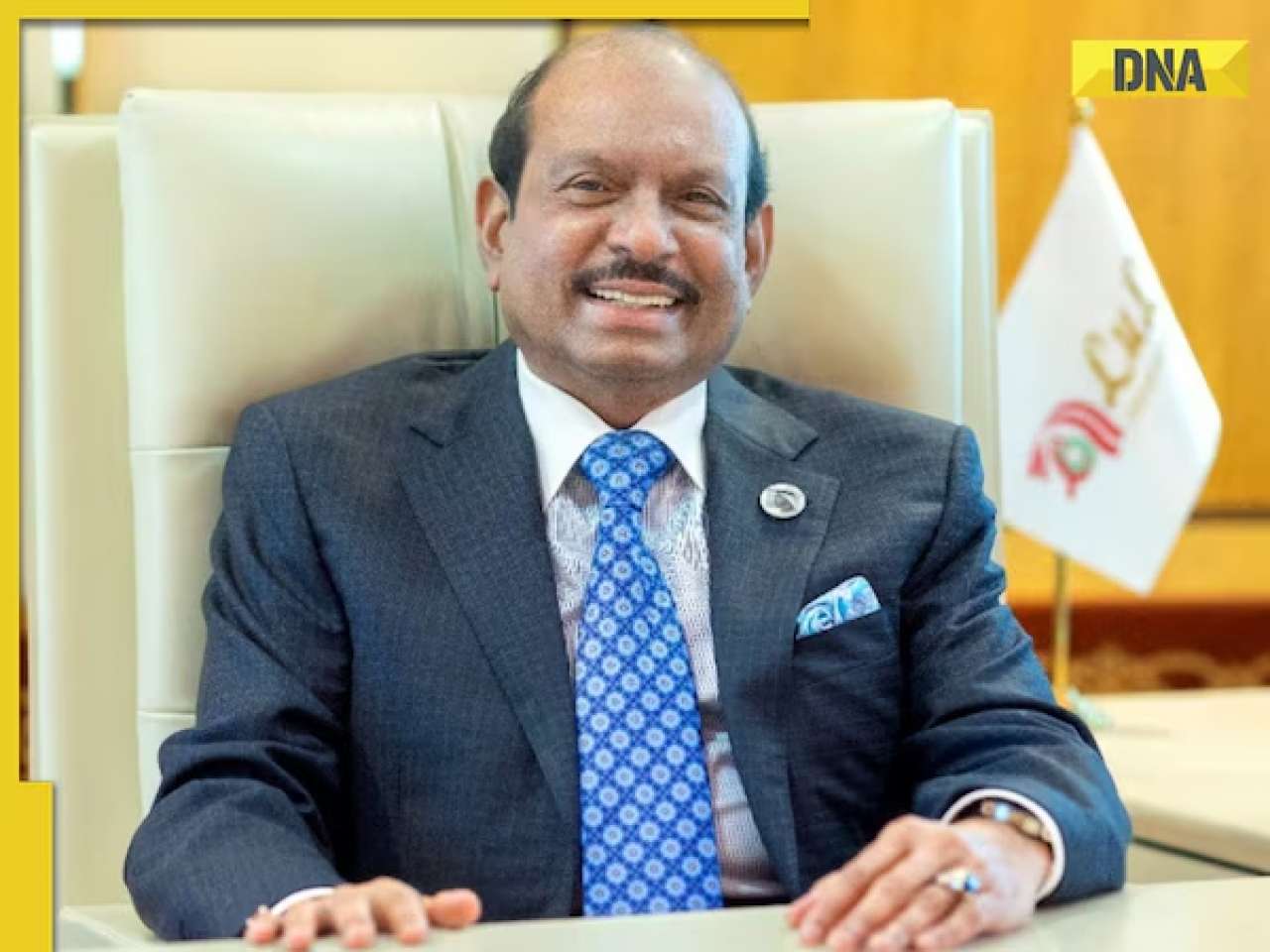Relation between India and the Gulf has remained strong through decades. It is not only based on trade and commerce but also on history and culture.
Around 10 days after BJP spokesperson Nupur Sharma and Naveen Kumar Jindal's alleged remarks on Prophet Muhammad, the party expelled one spokesperson, whereas the other has been suspended amid rising social media calls for a boycott of Indian products in the Gulf region.
This step was taken after three countries in the Gulf region summoned the Indian ambassadors to their nations to register their protest. They even demanded a public apology from India. Soon after, many countries followed.
Read | India clarifies as more Islamic nations join in condemning Prophet Muhammad remarks, 10 updates
Qatar, Saudi Arabia, Kuwait, Oman, the UAE, Iran, Jordan, Maldives, Afghanistan, Bahrain, Pakistan and Indonesia were among the countries that condemned the remarks by the two, now former BJP spokesperson. Here we try to understand the relationship India shares with the Gulf nations and how much both are dependent on the other.
Why India can't ignore Gulf?
The relationship between India and the Gulf nations has remained strong through decades. It is not only based on trade and commerce but also on history and culture. Huge number of Indians live and work in the Gulf countries, resulting in the biggest chunk of remittances coming to India from there.
Over the years, India's political and business connections with these countries have only become stronger. Indians make up more than a third of the UAE's population. In the Gulf, there are 89 lakh Indian citizens. For its oil needs too, India relies heavily on the Gulf region.
India and Gulf cultural relations
India's relations with the people of the Gulf and the Arabian Peninsula dates back several millennia when Indian sailors, merchants, intellectuals and men of faith traversed the waters of the Indian Ocean. They exchanged navigation skills, goods, ideas and belief systems.
They thus enriched each other materially and spiritually and created a shared ethos that endures to this day. The significant presence of the Indian community in the Gulf countries over the last 40 years and the role of Indian enterprises in the development of the region has cemented this relationship.
During 2005 to 2007, the head of state or government of every Gulf Cooperation Council (GCC) country visited India. Saudi ruler King Abdullah bin Abdulaziz was chief guest at India's Republic Day in 2006, the first visit of a Saudi ruler to India since 1955. India and Saudi Arab expanded their ties in political, security, defence, economic and cultural areas.
Prime Minister Narendra Modi further cemented the relationship from the beginning of his term with a series of visits to all the major regional capitals in 2015-16 and encouraging return visits. These visits have included Saudi Arab, the UAE, Qatar, Bahrain and Oman.
India and Gulf economic and trade ties
The Gulf Cooperation Council (GCC) countries also became India's principal trade and investment partners. The United Arab Emirates is India's third-largest trading partner.
Some of the major retail stores and restaurants in the Gulf countries are owned by Indians. The calls to boycott Indian products could actually hit businesses owned by Indians.
In 2006, former PM Manmohan Singh and the then Saudi ruler King Abdullah bin Abdulaziz signed the Delhi Declaration that committed the two countries to a strategic energy partnership.
Saudi Arab recognised India's status as a major global oil importer, with over 50% of its needs being met by the Gulf Cooperation Council (GCC) countries.
India-GCC strategic partnership was given formal shape by the Riyadh Declaration of February 2010 to pursue expansion of ties in political, security, defence, economic and cultural areas.
The Gulf states also rely on India. After the United States, the The United Arab Emirates (UAE) is India's second-largest export destination and third-largest trading partner.
India and the United Arab Emirates's bilateral trade was valued at USD 72.9 billion in 2021-22, with India's exports accounting for USD 28.4 billion.
Under the newly concluded Comprehensive Economic Partnership Agreement, total trade between India and the UAE is expected to reach USD 100 billion by 2026.
How much oil India imports from Gulf countries?
In 2006-07, India sourced crude oil from 27 countries and in 2020-21 India sourced crude oil from 42 nations.
The top 20 sources of India's oil imports consistently accounted for over 95% and the top 10 countries accounted for over 80% in the last 15 years.
The share of Persian Gulf countries in India's crude imports has remained at around 60% over the last 15 years.
The top oil exporter to India in 2020-21 was Iraq followed by Saudi Arab. Iraq's share increased from about 9% in 2009-10 to over 22% in 2020-21.
Saudi Arab's share in India's crude imports has remained steady between 17-18% over a decade.
How much Gulf countries are reliant on India?
The Gulf countries are specially reliant on food and cereal imports. Over 85% of their food and 93% of their cereals are imported. Rice, buffalo meat, spices, marine products, fruits, vegetables, and sugar are all key exports from India to the Gulf nations.
India's bilateral trade with all the six members of GCC (Gulf Cooperation Council) group countries, including the UAE and Saudi Arabia, has increased significantly in 2021-22. This is due to the increasing economic ties between the two regions.
India's exports to the Gulf Cooperation Council countries have increased by 58.26% to about USD 44 billion in 2021-22 against USD 27.8 billion in 2020-21, according to the data of the Union Commerce Ministry. India's total exports to these six countries has risen to 10.4% in 2021-22 from 9.51% in 2020-21.
Similarly, imports rose by 85.8% to USD 110.73 billion compared to USD 59.6 billion in 2020-21, the data showed. The share of GCC members in India's total imports rose to 18% in 2021-22 from 15.5% in 2020-21. Bilateral trade has increased to USD 154.73 billion in 2021-22 from USD 87.4 billion in 2020-21.
(Data taken from Union Commerce Ministry)
![submenu-img]() Meet man who once suffered loss of Rs 15 crore, then built Rs 2000 crore turnover company at 60, he is…
Meet man who once suffered loss of Rs 15 crore, then built Rs 2000 crore turnover company at 60, he is…![submenu-img]() 'They did her dirty': Aishwarya Rai fans criticise stylist for her 'failed art project' outfit on Cannes red carpet
'They did her dirty': Aishwarya Rai fans criticise stylist for her 'failed art project' outfit on Cannes red carpet![submenu-img]() Woman walks on the streets of Tokyo in saree, viral video shows people’s reaction
Woman walks on the streets of Tokyo in saree, viral video shows people’s reaction![submenu-img]() Blinkit offering ‘free dhaniya’ with vegetable orders, people now asking for free…
Blinkit offering ‘free dhaniya’ with vegetable orders, people now asking for free…![submenu-img]() Kartam Bhugtam: Shreyas Talpade-starrer is a riveting dive into the unknown
Kartam Bhugtam: Shreyas Talpade-starrer is a riveting dive into the unknown![submenu-img]() Meet PhD wife of IIT graduate hired at Rs 100 crore salary package, was fired within a year, he is now…
Meet PhD wife of IIT graduate hired at Rs 100 crore salary package, was fired within a year, he is now…![submenu-img]() Meet woman not from IIT, IIM or NIT, cracked UPSC exam in first attempt with AIR...
Meet woman not from IIT, IIM or NIT, cracked UPSC exam in first attempt with AIR...![submenu-img]() Maharashtra Board Results 2024: MSBSHSE class 10th, 12th results soon, know how to check results via SMS
Maharashtra Board Results 2024: MSBSHSE class 10th, 12th results soon, know how to check results via SMS![submenu-img]() Meet Indian genius who became world’s 'youngest' surgeon at 7, worked in IIT for...
Meet Indian genius who became world’s 'youngest' surgeon at 7, worked in IIT for...![submenu-img]() Meet Kashmir boy, who is JEE topper, wants to pursue Computer Science, he aims to clear...
Meet Kashmir boy, who is JEE topper, wants to pursue Computer Science, he aims to clear...![submenu-img]() DNA Verified: Is CAA an anti-Muslim law? Centre terms news report as 'misleading'
DNA Verified: Is CAA an anti-Muslim law? Centre terms news report as 'misleading'![submenu-img]() DNA Verified: Lok Sabha Elections 2024 to be held on April 19? Know truth behind viral message
DNA Verified: Lok Sabha Elections 2024 to be held on April 19? Know truth behind viral message![submenu-img]() DNA Verified: Modi govt giving students free laptops under 'One Student One Laptop' scheme? Know truth here
DNA Verified: Modi govt giving students free laptops under 'One Student One Laptop' scheme? Know truth here![submenu-img]() DNA Verified: Shah Rukh Khan denies reports of his role in release of India's naval officers from Qatar
DNA Verified: Shah Rukh Khan denies reports of his role in release of India's naval officers from Qatar![submenu-img]() DNA Verified: Is govt providing Rs 1.6 lakh benefit to girls under PM Ladli Laxmi Yojana? Know truth
DNA Verified: Is govt providing Rs 1.6 lakh benefit to girls under PM Ladli Laxmi Yojana? Know truth![submenu-img]() Aishwarya Rai Bachchan turns heads in intricate black gown at Cannes, walks the red carpet with injured arm in cast
Aishwarya Rai Bachchan turns heads in intricate black gown at Cannes, walks the red carpet with injured arm in cast![submenu-img]() Laapataa Ladies' Poonam aka Rachna Gupta looks unrecognisable in viral photos, amazes with jaw-dropping transformation
Laapataa Ladies' Poonam aka Rachna Gupta looks unrecognisable in viral photos, amazes with jaw-dropping transformation![submenu-img]() In pics: Taarak Mehta Ka Ooltah Chashmah actress Deepti Sadhwani dazzles in orange at Cannes debut, sets new record
In pics: Taarak Mehta Ka Ooltah Chashmah actress Deepti Sadhwani dazzles in orange at Cannes debut, sets new record![submenu-img]() Ananya Panday stuns in unseen bikini pictures in first post amid breakup reports, fans call it 'Aditya Roy Kapur's loss'
Ananya Panday stuns in unseen bikini pictures in first post amid breakup reports, fans call it 'Aditya Roy Kapur's loss'![submenu-img]() Remember Harsh Lunia? Just Mohabbat child star, here's how former actor looks now, his wife is Bollywood's popular...
Remember Harsh Lunia? Just Mohabbat child star, here's how former actor looks now, his wife is Bollywood's popular...![submenu-img]() Haryana Political Crisis: Will 3 independent MLAs support withdrawal impact the present Nayab Saini led-BJP government?
Haryana Political Crisis: Will 3 independent MLAs support withdrawal impact the present Nayab Saini led-BJP government?![submenu-img]() DNA Explainer: Why Harvey Weinstein's rape conviction was overturned, will beleaguered Hollywood mogul get out of jail?
DNA Explainer: Why Harvey Weinstein's rape conviction was overturned, will beleaguered Hollywood mogul get out of jail?![submenu-img]() What is inheritance tax?
What is inheritance tax?![submenu-img]() DNA Explainer: What is cloud seeding which is blamed for wreaking havoc in Dubai?
DNA Explainer: What is cloud seeding which is blamed for wreaking havoc in Dubai?![submenu-img]() DNA Explainer: What is Israel's Arrow-3 defence system used to intercept Iran's missile attack?
DNA Explainer: What is Israel's Arrow-3 defence system used to intercept Iran's missile attack?![submenu-img]() 'They did her dirty': Aishwarya Rai fans criticise stylist for her 'failed art project' outfit on Cannes red carpet
'They did her dirty': Aishwarya Rai fans criticise stylist for her 'failed art project' outfit on Cannes red carpet![submenu-img]() Kartam Bhugtam: Shreyas Talpade-starrer is a riveting dive into the unknown
Kartam Bhugtam: Shreyas Talpade-starrer is a riveting dive into the unknown![submenu-img]() Richa Chadha says Heeramandi co-star Sharmin Segal being trolled for her performance is 'audience’s right'
Richa Chadha says Heeramandi co-star Sharmin Segal being trolled for her performance is 'audience’s right'![submenu-img]() Meet only Indian actress whose film is competing for top prize at Cannes; not Aishwarya, Deepika, Kiara, Priyanka, Alia
Meet only Indian actress whose film is competing for top prize at Cannes; not Aishwarya, Deepika, Kiara, Priyanka, Alia![submenu-img]() How two heroines beat Rajinikanth, Vijay, Dhanush to give Tamil cinema's biggest hit of 2024; low-budget film earned...
How two heroines beat Rajinikanth, Vijay, Dhanush to give Tamil cinema's biggest hit of 2024; low-budget film earned...![submenu-img]() Woman walks on the streets of Tokyo in saree, viral video shows people’s reaction
Woman walks on the streets of Tokyo in saree, viral video shows people’s reaction![submenu-img]() Why Australians walk barefoot in public: Here’s the reason
Why Australians walk barefoot in public: Here’s the reason![submenu-img]() People in this country compete to see who’s best at doing nothing, here's why
People in this country compete to see who’s best at doing nothing, here's why![submenu-img]() Viral video: Influencer dressed as 'Manjulika' dances on crowded road, internet reacts
Viral video: Influencer dressed as 'Manjulika' dances on crowded road, internet reacts![submenu-img]() Viral video: Baby elephant receives 'Z-category security' during family nap in Tamil Nadu reserve
Viral video: Baby elephant receives 'Z-category security' during family nap in Tamil Nadu reserve






































)


















)
)
)
)
)
)